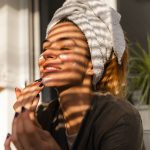New Study Has Found Children’s Headphones May Cause Hearing Loss

If you’re thinking about buying your kid some headphones for Christmas you may want to know about new research that has found headphones could cause hearing loss to your children.
Brands that claim their headphones are “safe for young ears” or are “100 percent safe listening” are often sought by parents to protect their children’s ears. But a new analysis by The Wirecutter, a product recommendations website owned by The New York Times Company, has found 30 sets of children’s earphones tested didn’t restrict the volume as advertised, which can be harmful to young ears in minutes.
Cory Portnuff, paediatric audiologist at the University of Colarado Hospital says the findings are important and the results are terrible. “Manufacturers are making claims that aren’t accurate.”
The findings should be a wake-up call to parents who thought they were buying volume-limiting headphones, aren’t getting what they paid for.
Dr. Blake Papsin, the chief otolaryngologist at the Hospital for Sick Children in Toronto said, “Headphone manufacturers aren’t interested in the health of your child’s ears,” he said. “They are interested in selling products, and some of them are not good for you.”
Children as young as 3 are listing to iPads and iPhones through headphones and according to a 2015 report of over 2600 participants, half of 8 to 12 year olds listen to music daily. Safe listening is important for young ears in both volume and duration. The louder the sound, the less time they should listen.
It’s important for parents to understand the linear relationship to sound. Eighty decibels is twice as loud as 70 decibels, and 90 decibels is four times louder.
The results of the anaylsis can be found on thewirecutter.com, but the brands that came out on top as the ones to purchase are the Bluetooth model called Puro BT2200 which cost $99US. The headphones were well liked by toddlers and children for fit and sound.
Brent Butterworth, an audio expert who helped test the headphones said it’s impossible to make the Bluetooth mode too loud.
The corded models that didn’t exceed 85 decibels and were a hit with the children are the Onanoff Buddyphones Explore ($29.99US) and JLab JBuddies Studio ($29.99US).
Dr. Papsin says it’s worth the money to buy headphones that both limit volume and cancel outside noise.
Despite the findings, audiologists are not suggesting kids NOT to use headphones, but more to think about how to protect little ears to prevent future hearing loss.
Of course there is no substitution for supervision when it comes to kids using headphones.
“Eighty-five decibels isn’t some magic threshold below which you’re perfectly safe and above which your ears bleed,” Dr. Fligor said.
Audiologists suggest
• Keep the volume at 60 percent
• Encourage children to take breaks every hour to allow the hair cells in the inner ear to rest
• If a parent is an arm length’s away, a child wearing headphones should hear when they are asked a question.
Dr. Jim Battey, the director of the National Institute on Deafness and Other Communication Disorders advises if your child can’t hear you when you practice the last tip, “that level of noise is unsafe and potentially damaging.”















Another less obvious danger most of us are not aware of when it comes to our children’s hearing are the loud noises that occur every time a balloon gets popped on a children’s party. Did you know that when a balloon pops, it can make a noise louder than a shotgun blast? Balloons are fun and seemingly innocent. But audiologists are beginning to see important correlations between balloons and hearing loss in those at a young age. For more information check this article: http://www.hearlink.com.au/industry-news/planning-your-next-children-birthday-party/